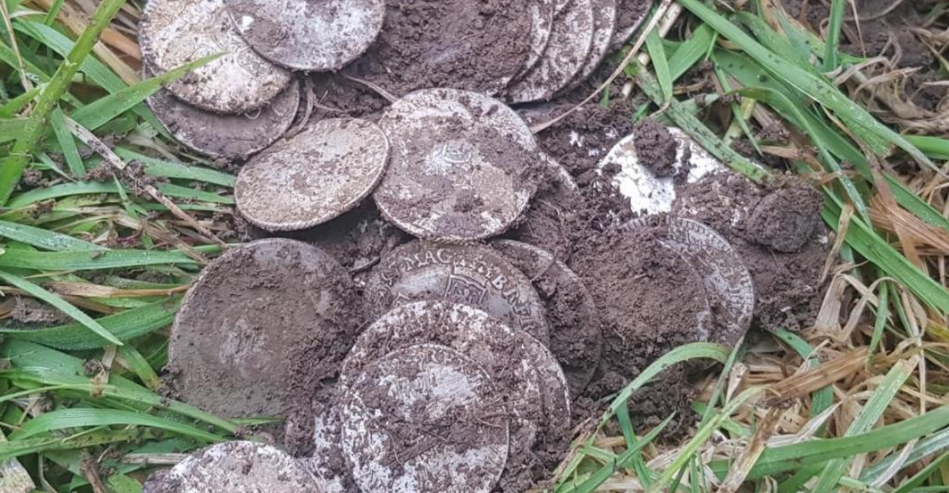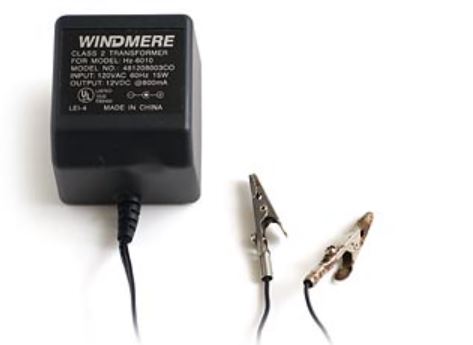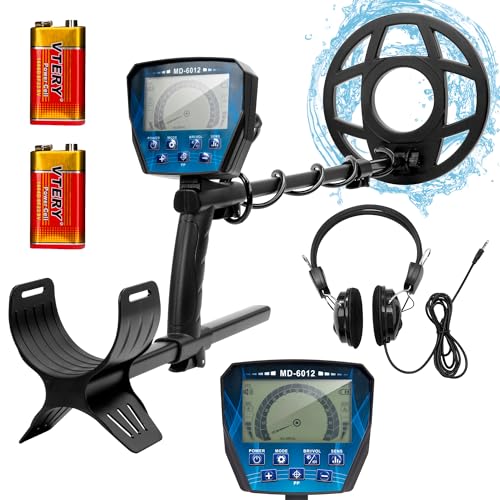
When you find old coins with your metal detector, it can be quite exciting. After all, those coins can be of all ages and even come from the other side of the globe if you’re lucky, but there is one thing they all have in common: they are all extremely dirty. Here’s our guide on cleaning coins with electrolysis.
Most, in fact, have dirt and grime that is stuck to the surface of the coins, sometimes so bad that you might think it will never come off.
Not to worry, though, because many metal-detecting enthusiasts use electrolysis to get their coins clean, and even though this process has to be done carefully, it is a very efficient way to clean coins that were previously buried deep in the ground.
Cleaning Coins With Electrolysis – Getting Started
All the bold instructions are to be adhered to. One thing to bear in mind when cleaning coins with electrolysis is that it is potentially dangerous, so all instructions should be followed exactly as they are printed.
You also have to keep an eye on the entire process because one error could be disastrous. Yes, it is potentially dangerous to clean coins with electrolysis, which is why each and every step must be completed with care. Here are the steps you need to take to clean your coins this way:
- Take an old power adapter or transformer with an output of 6-12 volts DC. Cut off the plug end and separate the two wires, then strip the wiring right down to the metal.
- Attach the two wires to alligator clips. You can solder them if you like. Next, file the end of one of these clips until it is smooth so that your coin isn’t damaged.
- Attach one of the clips (the negative side) to the coin and one to an anode. For the anode, you can use something such as aluminum or lead (graphite) from a mechanical pencil, or even a spoon that is not made of stainless steel. Never use anything stainless steel as your anode.
- To determine the positive and negative on your power adapter, use a multimeter. If you don’t have one of these meters, place both clips in a solution of water and baking soda and see which one fizzes. This one is the negative side. When doing this, never let the two clips touch one another.
- Keep the anode clip out of the water. Only the metal should be in the solution. You can use a solution of water and baking soda or vinegar and baking soda. Place your anode into the solution, connect the clip to it, then connect the negative clip to the coin before placing it in the solution. Never allow the two clips to touch one another, but place them fairly close together.
- Once you get to this point, plug in the adapter, and the coin will start to fizz, which means it is being cleaned. Check the solution every few minutes, and replace it whenever it starts to get dirty.
- Do not use salt in your solution, and use enough solution to fully cover the coin.

Some Tips and Suggestions for Cleaning Coins with Electrolysis
Remember, that when cleaning coins with electrolysis, it can be potentially dangerous, but not if you pay attention to every word of the instructions.
As long as you’re following the instructions and paying close attention to each and every step, you will be safe.
To make it a little easier, below are some tips and suggestions to pay attention to whenever you’re going through this process:
- You can clean old coins with olive oil, but it will take months to complete the process. Electrolysis can clean the coins in seconds or minutes, so it is an extremely efficient way of cleaning old coins.
- Remember that water and electricity do not mix; therefore, always keep the power adapter away from any fluids at all times.
- The clip ends should never touch because this could cause a short in your adapter.
- Always work in a well-ventilated area as you complete the cleaning process.
- Carbon or graphite will eliminate any plating issues, as will aluminum. Stainless steel should never be used because it produces chromates in the solution, which causes burns and even cancer. You also cannot dispose of solutions with chromates in them in the ground or down the drain. Instead, you have to let it dry out, place the residue in sealed containers, then bring those containers to a hazardous waste site. For these reasons, you should never use stainless steel in the electrolysis process.
- Never use the same solution when cleaning copper, nickel, and silver coins. Use a fresh solution for each of these types of coins.
- When cleaning, although the two tips should not touch, they should be close together. If they are far apart instead, this means your cleaning time will be a lot longer.
- Never leave your power adapter on for too long. It simply gets too hot. To avoid problems, check the adapter every five minutes, and if it’s hot, unplug it for a few minutes to let it cool down some. Then, continue with the cleaning process.
- If you’re cleaning silver or copper coins, they’ll turn black at first. You’ll have to clean them further with an old toothbrush and some soap and water. So, don’t panic if you’re using electrolysis on your copper or silver coins and they turn black.
- For extra-stubborn gunk, you can use a small knife or a toothpick to remove it.
- Clad coins should never be cleaned using electrolysis. Instead, use a rock tumbler.
Cleaning Coins With Electrolysis – Final Thoughts
Although electrolysis is an excellent way to clean old coins you found while using your metal detector, the process must be done correctly every step of the way or it can be dangerous.
If you follow the instructions on cleaning coins with electrolysis, however, you can complete the process over and over again in a safe manner, so you shouldn’t be hesitant or afraid to give it a try.
In fact, once you learn what to do and what not to do, you’ll understand why electrolysis is such an efficient and thorough way to clean old coins made out of silver, copper, or nickel.
So, go ahead and use that metal detector because now you have a great way to clean any old coins you may find in the process.














